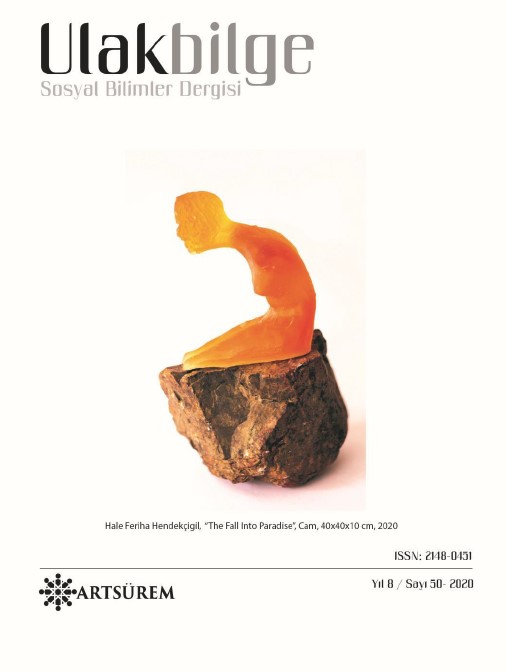BİR SANAT HAREKETİ OLAN MİNİMALİZMDE İZLEYİCİ-ESER ETKİLEŞİMİNİN ALGISAL BOYUTLARI
PERCEPTIONAL DIMENSIONS OF AUDIENCE-WORK INTERACTION IN MINIMALISM ART MOVEMENT
Author(s): Mehmet Susuz, Ahmet Türe, Ömer Tayfur ÖztürkSubject(s): Cultural history, Aesthetics, Sociology of Culture, Sociology of Art, History of Art
Published by: Sanat ve Dil Araştırmaları Enstitüsü
Keywords: art; Minimalism; object; Conceptual Art; perception; audience;
Summary/Abstract: One of the breaking points of the change that art has undergone in terms of both form and content is Minimalism. There are processes that affect the existence of every art movement. The sociocultural structure that emerged after the World Wars has had influence in the field of art, as in many other fields. The Abstract Expressionism movement that emerged in this period, aimed at rejecting the familiar structure of painting, detached objects from their real-world forms / characteristic structures and included unusual artistic forms in the process. Despite this hard-to-perceive automatism-based complex structuring put forward by the Abstract Expressionism movement in art, it is a common belief that Minimalism, which aims at plain and simple forms based on logic in painting and sculpture, is "a reaction against Abstract Expressionism". Despite the "subjective" based complex formalism that Abstract Expressionists have created with the intensity of emotion, Minimalists have revealed their understanding of art with the "objective" based forms they have created as a result of a planned effort. However, the simplicity of the forms in Minimalism should not bring to mind the idea that the intellectual dimension in the essence of the works can be easily perceived. The existence of conceptual values should be taken into consideration in the formation of minimal forms. Although minimal art is shaped with an "objective" approach, it is important to reveal the sociocultural motivations that affect the formation of the works in the essence of the audience's ability to perceive the works. Minimalism, which centers the interaction of "industry, object and art", opens a critical space for the audience, who are the receptors of art, regarding the state of art. On the basis of this criticism, beyond its plain style, Minimal art's complex conceptual (intellectual) structure can be manifested. Purpose of this research, To reveal the intellectual foundations that affect the formation of Minimal art and to touch on the perceptual dimensions of the minimal artworks and audience interaction. In this research conducted within the framework of the title of "Perceptual Dimensions of Audience-Work Interaction in Minimalism Art Movement", scanning method has been used to obtain information and documents. The obtained information and documents have been used in a way that provides integrity for the purpose of the research.
Journal: Ulakbilge Sosyal Bilimler Dergisi
- Issue Year: 8/2020
- Issue No: 50
- Page Range: 852-861
- Page Count: 10
- Language: Turkish

